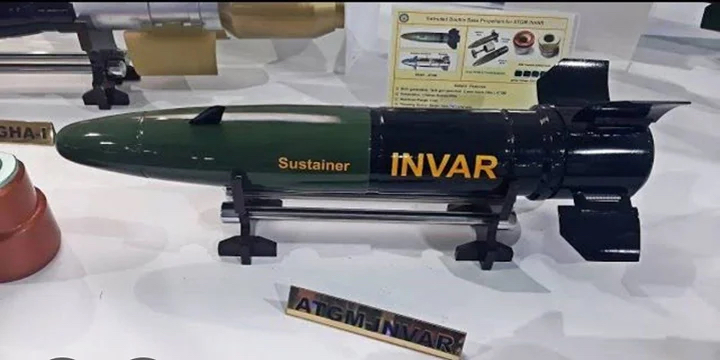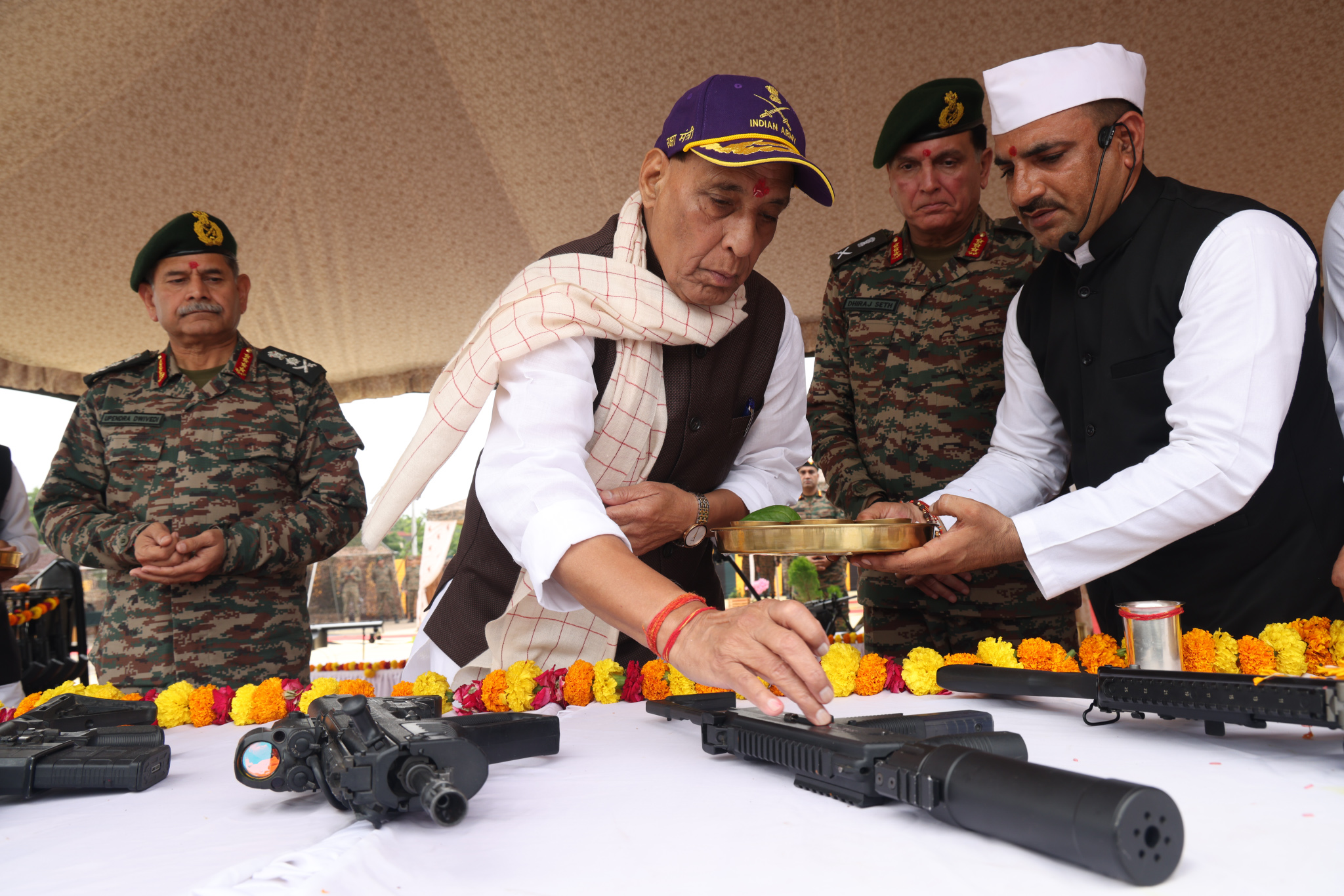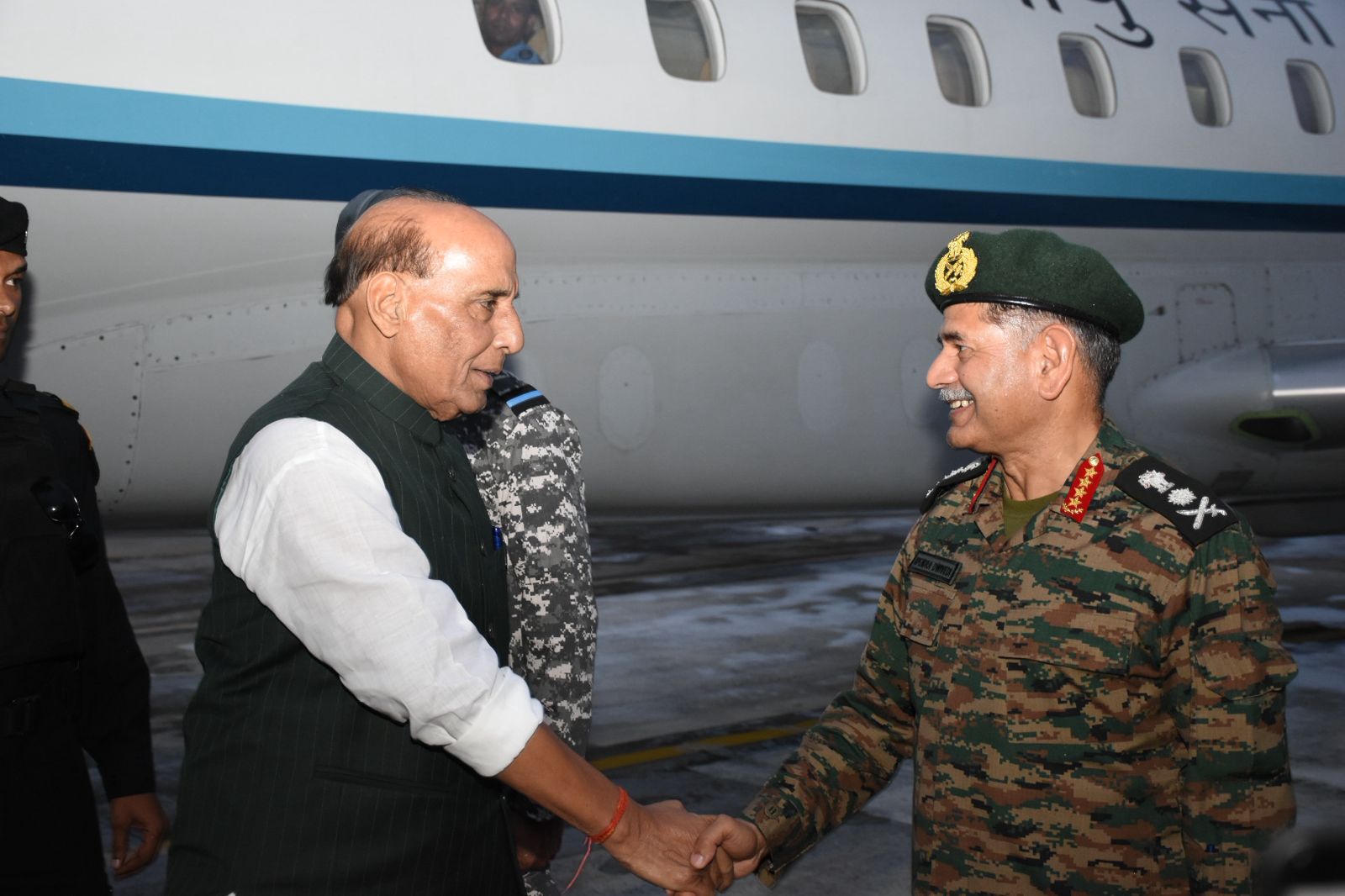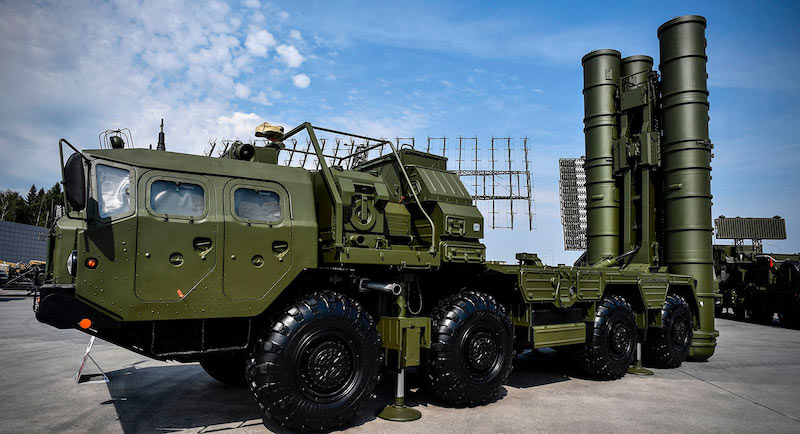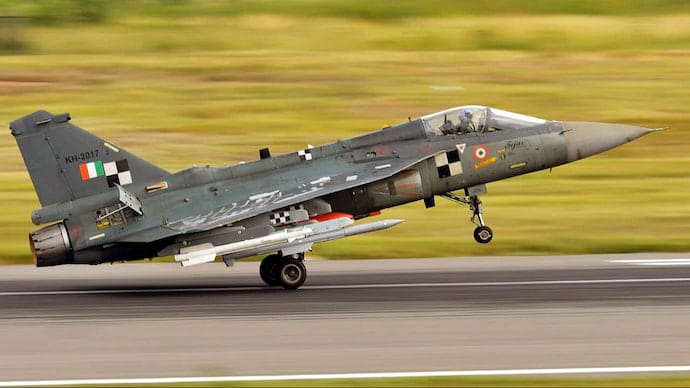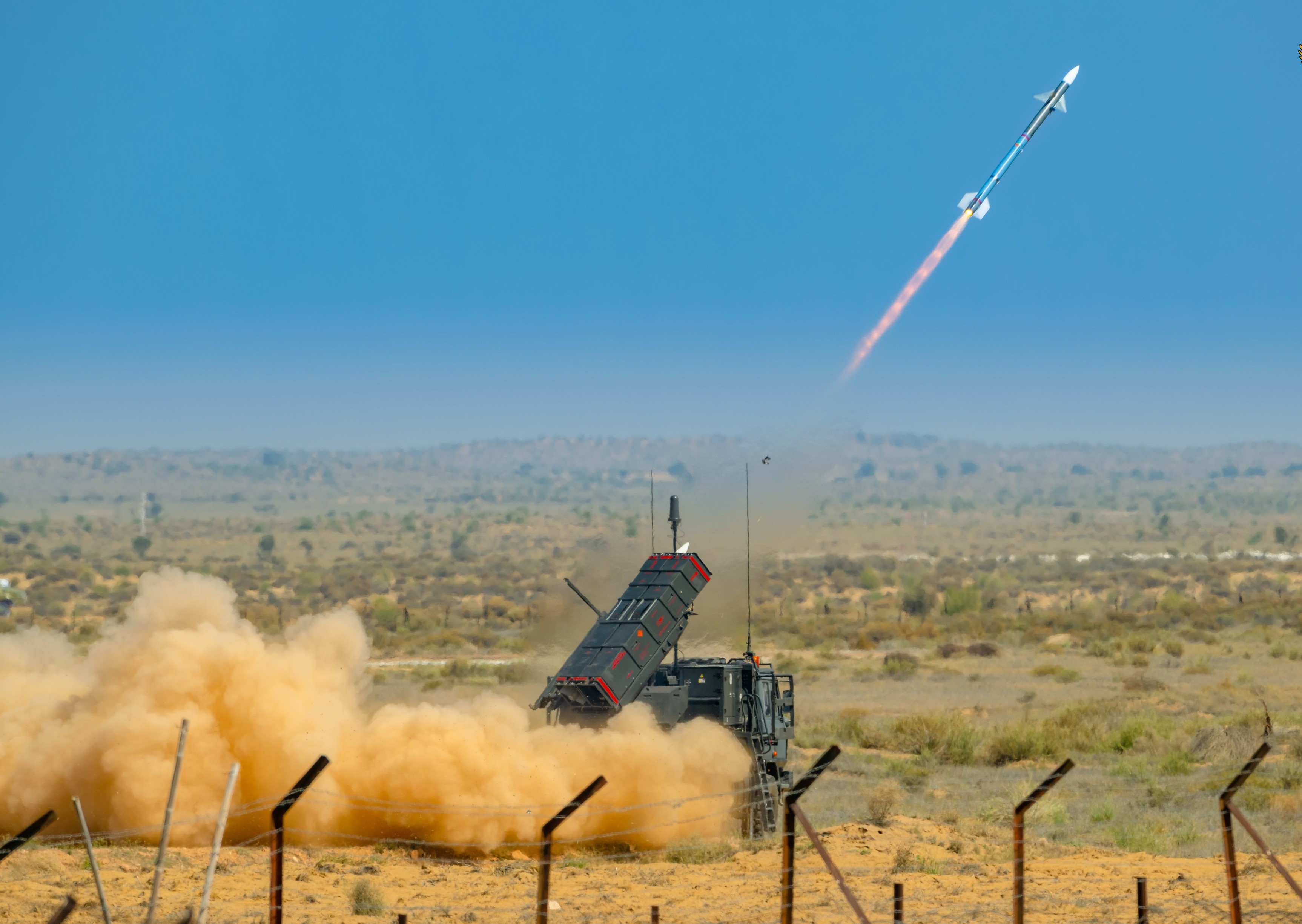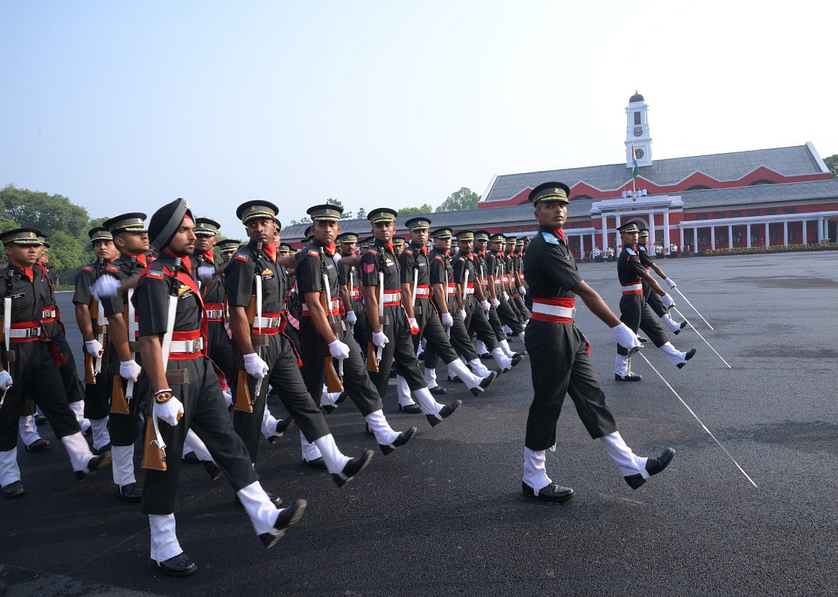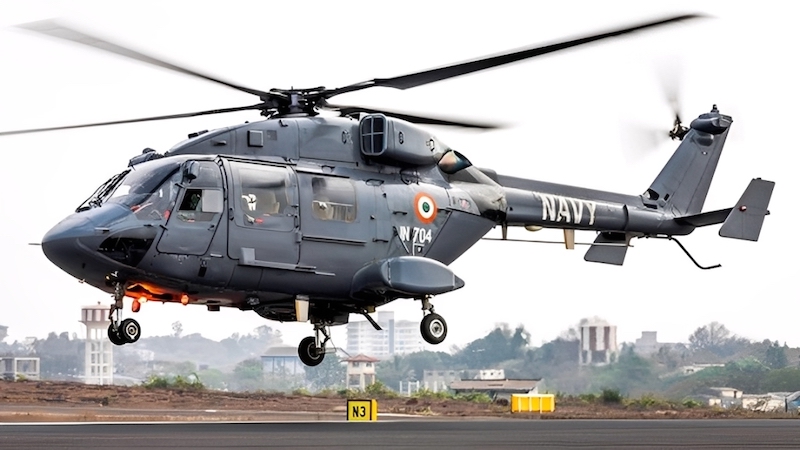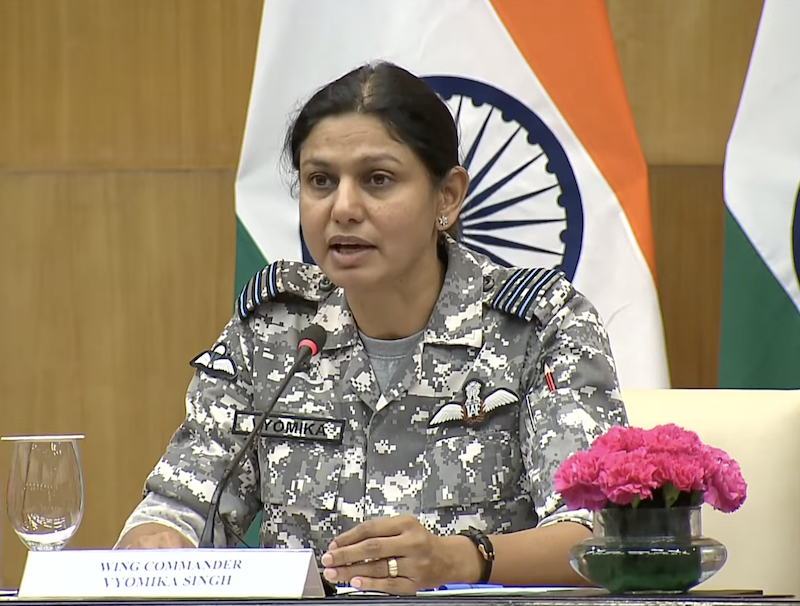 Wing Commander Vyomika Singh during her media briefing in New Delhi, on May 9, 2025. (India Sentinels photo)
Wing Commander Vyomika Singh during her media briefing in New Delhi, on May 9, 2025. (India Sentinels photo)
New Delhi: In an unprecedented escalation along the western frontier, India’s armed forces revealed on Friday that Pakistan launched a coordinated drone incursion of 300 to 400 unmanned aerial vehicles (UAVs) across 36 locations from Leh in Ladakh to Sir Creek in Gujarat on the intervening night of May 8 and 9. The large-scale aerial intrusion, described as an attempt to probe India’s air-defence systems and gather intelligence, was met with a swift and decisive response under Operation Sindoor, military officials stated at a high-profile media briefing in the capital.
As reported on Thursday, Pakistan started escalating the military confrontation with India after New Delhi launched Operation Sindoor to hit terror bases inside Pakistan and Pakistan-occupied Kashmir on the intervening night of May 6 and 7 following the heinous terrorist attack in Pahalgam.
Massive Drone Swarm
Wing Commander Vyomika Singh, spokeswoman for India’s armed forces, outlined the scale and intent of the Pakistani operation. “On the intervening night of May 8 and 9, Pakistan violated Indian airspace using a swarm of approximately 300 to 400 drones, targeting both civilian and military infrastructure at 36 locations along our western border,” she said. “Many of these drones were neutralized using both kinetic and non-kinetic means, but some did fall on Indian soil.”
Initial forensic analysis of debris from downed UAVs points to the use of Turkish-made Asisguard Songar drones, which are known for their surveillance and precision strike capabilities. According to Wg Cdr Singh, “The possible purpose of these large-scale aerial intrusions was to test our air-defence systems and gather intelligence,” the Indian Air Force officer said.
Indian Response
India’s armed forces responded with “proportionate, adequate, and responsible” force. Colonel Sofiya Qureshi, another spokeswoman for Operation Sindoor, provided further operational details. “On the night of May 7 and 8, the Pakistani army violated Indian airspace several times over the entire western border with the intention of targeting military infrastructure. Not only this, the Pakistani army also fired heavy-calibre weapons along the line of control (LoC). Around 300 to 400 drones were used to attempt infiltration at 36 locations,” she said.
Col Qureshi then informed the media that an armed drone, which was on its way to hit a military station in Punjab’s Bathinda, was also neutralized.
The Indian Army officer also said the Pakistani military used heavy artillery and armed drones targeting the areas of Tangdhar, Uri, Poonch, Mendhar, Rajouri, Akhnoor, and Udhampur in Jammu & Kashmir.
The Indian response was not limited to drone interceptions. Armed drones were launched at four Pakistani air-defence sites, resulting in the destruction of at least one radar installation.
“India retaliated with its own set of armed drones targeted at four air-defence sites in Pakistan, and one of them destroyed an air-defence radar of Pakistan,” Col Qureshi confirmed.
The Army officer then said, “Pakistan was learned to be using its civil airliners as shield (against Indian air-defence fire).”
Cross-Border Shelling on Civilians
The drone attacks were accompanied by intense artillery shelling from Pakistan along the LoC, which targeted several areas, such as Dhungar, Uri, Poonch, Mendhar, Rajouri, Akhnoor, and Udhampur in Jammu & Kashmir. These actions resulted in injuries and some losses among Indian Army personnel. Pakistani shelling since May 6 has led to at least 16 civilian deaths and dozens more injured in border areas, with significant destruction reported in Kupwara, Baramulla, Uri, Poonch, and Mendhar.
One Pakistani drone managed to strike a civilian area in Ferozpur, Punjab, injuring three people, including a woman who remains in critical condition with severe burns. Emergency measures, including blackouts, were imposed in several cities across Jammu and Kashmir, Punjab, and Rajasthan to prevent further casualties and maintain order during the crisis.
Pakistan’s Use of Civilian Aircraft
Both Wing Commander Singh and Colonel Qureshi highlighted Pakistan’s use of civilian airliners as shields during the attacks, a tactic aimed at deterring Indian retaliation and risking the safety of innocent passengers. “Pakistan did not close its civil airspace despite launching a failed and unprovoked drone and missile attack. Pakistan is using civil airliners as a shield, knowing fully well that its attack on India would elicit a swift air defence response,” the spokeswomen said, calling this behaviour “irresponsible and dangerous.”
There were also attempts to target places of worship in India, which officials described as a deliberate effort to instigate communal hostility within the country.
India’s Diplomatic Stand
In the same media briefing on Friday, India’s foreign secretary, Vikram Misri, condemned Pakistan’s actions in unequivocal terms. “These provocative and escalatory actions taken by Pakistan last night were targeted at Indian cities and civilian infrastructure in addition to military establishments. Indian armed forces responded proportionately, adequately, and responsibly,” Misri stated.
He dismissed Pakistan’s official denials as “blatantly farcical” and further evidence of “the new depths they are plumbing to.”
Misri emphasized that India’s response was “non-escalatory, precise, and considered,” reiterating that Indian forces targeted only terrorist infrastructure within Pakistan and acted strictly in retaliation to unprovoked aggression.
“India has repeatedly emphasized that it only targeted terrorist infrastructure within Pakistan, adhering to a measured approach,” he said.
India’s leadership, both military and diplomatic, has reaffirmed the nation’s commitment to defending its sovereignty, protecting its citizens, and responding firmly to any act of aggression, while avoiding unnecessary escalation.
MEA and MoD media briefing on Operation Sindoor, on May 9, 2025.
© India Sentinels 2025-26


